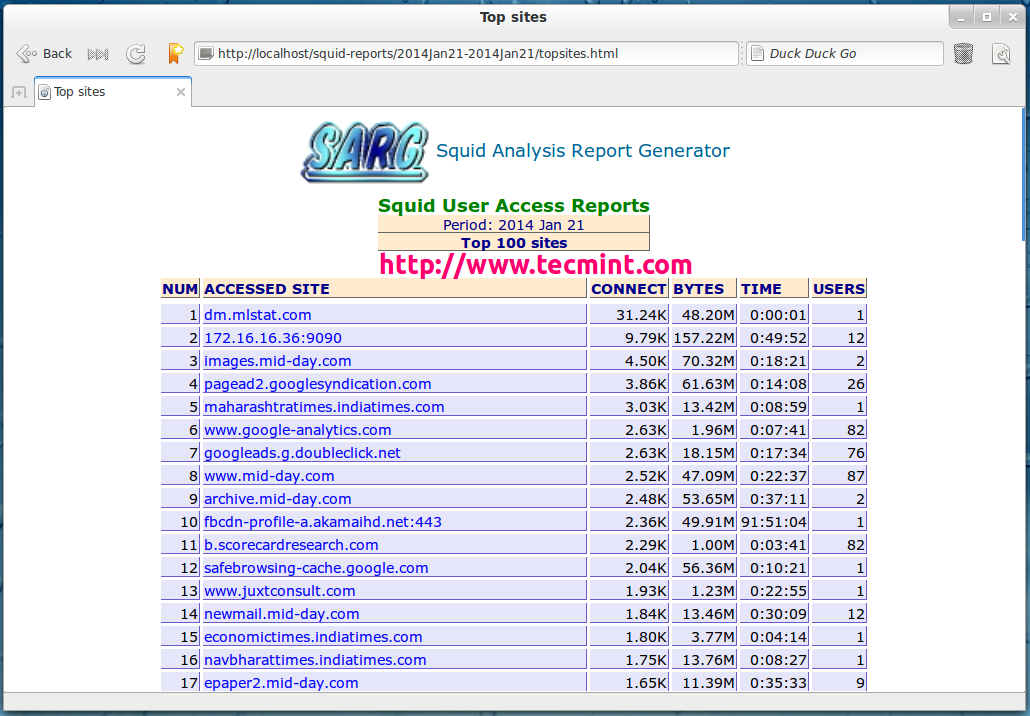Install Sarg Squid Log Analyzer in Linux In this article I will guide you on how to install and configure SARG – Squid Analysis Report Generator on RHEL/ CentOS/ Fedora and Debian/ Ubuntu/ Linux Mint systems. Installing Sarg – Squid Log Analyzer in Linux I assume that you already installed, configured and tested Squid server as a transparent proxy and DNS for the name resolution in caching mode. If not, please install and configure them first before moving further installation of Sarg. Dnangel Opening Song Full Download.
The Squid Analysis Report Generator (SARG) analyses the proxy log files and creates attractive reports from it. SARG shows how much bandwidth is used by individual. (Squid + SquidGuard + IPTables + Sarg + Webmin). Squid Analysis Report Generator is a tool that allow you to view “where. # yum -y install squid.
Important: Please remember without the Squid and DNS setup, no use of installing sarg on the system it will won’t work at all. So, it’s a request to install them first before proceeding further to Sarg installation. Follow these guides to install DNS and Squid in your Linux systems: Install Cache-Only DNS Server • • • Install Squid as Transparent Proxy • • Step 1: Installing Sarg from Source The ‘ sarg‘ package by default not included in RedHat based distributions, so we need to manually compile and install it from source tarball. For this, we need some additional pre-requisites packages to be installed on the system before compiling it from source.

On RedHat/CentOS/Fedora # yum install –y gcc gd gd-devel make perl-GD wget httpd Once you’ve installed all the required packages, download the latest or you may use the following wget command to download and install it as shown below. # wget # tar -xvzf sarg-2.3.10.tar.gz # cd sarg-2.3.10 #./configure # make # make install On Debian/Ubuntu/Linux Mint On Debian based distributions, sarg package can be easily install from the default repositories using apt-get package manager. $ sudo apt-get install sarg Step 2: Configuring Sarg Now it’s time to edit some parameters in SARG main configuration file. The file contains lots of options to edit, but we will only edit required parameters like: • Access logs path • Output directory • Date Format • Overwrite report for the same date. Open sarg.conf file with your choice of editor and make changes as shown below. # vi /usr/local/etc/sarg.conf [On RedHat based systems] $ sudo nano /etc/sarg/sarg.conf [On Debian based systems] Now Uncomment and add the original path to your squid access log file. # sarg.conf # # TAG: access_log file # Where is the access.log file # sarg -l file # access_log /var/log/squid/access.log Next, add the correct Output directory path to save the generate squid reports in that directory.
